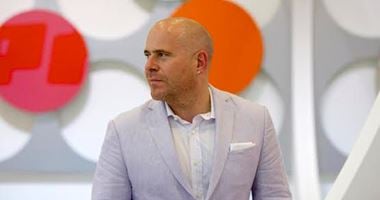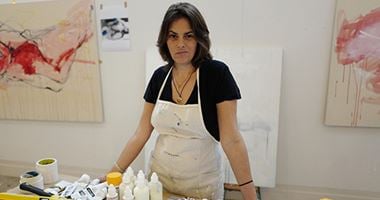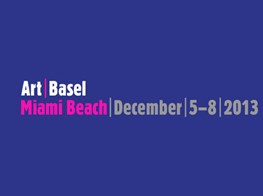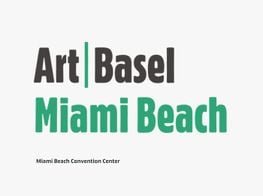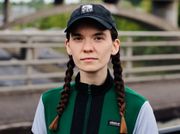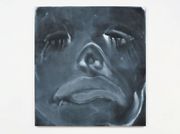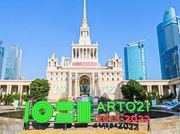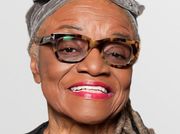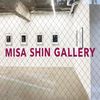Trans-Miami
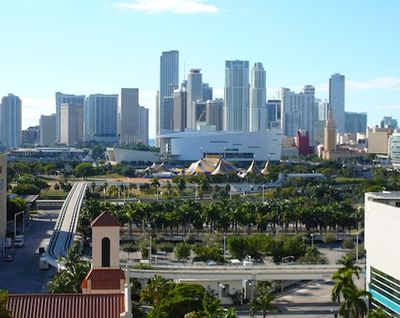
Miami city.
Miami has been described as transnational, given its diverse cultural composition and the differences that exist therein. This 'trans' identity is enhanced during Miami Art Week, when Miami and Miami Beach—in fact two separate cities joined together by a bridge over Biscayne Bay—are united by all things art related. It is a time when there is no difference between Miami or Miami Beach for those who don't know better. For us, it's all (and so) 'Miami'.
Miami's complex identity is reflected in the exhibitions presented by the Pérez Art Museum Miami, (PAMM, formerly the Miami Art Museum), which opened its new home, a Herzog and de Meuron building located in the Miami Museum Park overlooking Biscayne Bay on 4th December. To mark its new beginning, the museum opened with the first comprehensive solo showing of works by Ai Weiwei and projects by Bouchra Khalili, Yael Bartana, Hew Locke, and Monika Sosnowska as well as the first installment of an exhibition cycle, Americana. With a focus on North America, South America, Central America and the Caribbean, the curatorial is divided into six thematic groupings (Desiring Landscape,Sources of the Self, Formalizing Craft, Progressive Forms, Corporal Violence, and Commodity Cultures), and presents works from the 1930s to today so as to highlight the true diversity of artistic production in the Americas as opposed to 'America'.
Americana is surprising in the best way. Fitting with the museum's general aim to explore, in director Thomas Collins's words, 'the confluence of cultures,' it presents an eclectic and illuminating overview of artistic trends, from minimalism to abstract expressionism. On the show, newly-appointed curator of the Guggenheim UBS MAP curator for Latin America, Pablo León de la Barra, noted enthusiastically: 'This totally shifts perspectives'. He was pointing out the fantastic juxtaposition of a characteristic anodized aluminium Donald Judd sculpture, Progression with Tube (1975), with a gouache work on paper by Hélio Oiticica, Metasquema #225 (1957) representing an irregular grid, presented in a room with works by Lygia Pape, Sol Lewitt, Julio Alpuy, Joaquin Torres-Garcia and Pablo Rasgado. De la Barra added: 'The terrain is moving'. That terrain being the vast, global tapestry of modern, postwar and contemporary art, united by trans-national visual languages that defined much of twentieth century art history.
Today, the district boasts some one hundred galleries, compared to 2002, when there were none.
Similarly, Miami-Dade's terrain is expanding, too, and clearly this expansion is not only about size but also about scope. It appears that plans are afoot to turn Miami and Miami Beach into a cultural hub that attracts visitors all year round, rather than for just one week in December. This makes sense given the diversity of populations in what Thomas Collins has observed as a 'one of the fastest growing regions of the country'. This growth is part of the Art Basel in Miami Beach effect. Now entering its 12th year, the fair has become the warm and humid heart of the American art market: a preeminent trading space. It has transformed the regional art scene, too. Exemplary of this, as Chairman of the Art Basel in Miami Beach Host Committee Norman Braman noted, is the Wynwood arts district.
Today, the district boasts some one hundred galleries, compared to 2002, when there were none. Over twenty satellite art fairs take place concurrent to Art Basel in Miami Beach, including Miami's older fair, Art Miami, now entering its 24th year and the two-year-old Untitled. Out of this momentum, museums and private collections have also evolved, including the Rubell Family Collection, the Margulies Collection, the De La Cruz collection, and the Debra and Dennis Scholl Collection. And the pace of development is not abating. The Guardian's Rowan Moore just identified Miami's new vice: Starchitects. Current projects include Rem Koolhaus, who is designing the Faena Art Center, to be opened in 2015, while sales have already begun for Zaha Hadid's luxury condo tower, One Thousand Museum.
Art has been one of the economic drivers behind Miami-Dade's millennial evolution; a reality that has not gone unnoticed by Miami-Dade authorities. Jonah Wolfson, for instance, speaking on behalf of Miami Beach mayor, Philip Levine, noted: 'Art Basel in Miami Beach has woven itself into the economy of our community'. Indeed, the power Art Basel wields was played out in rumours that Art Basel might leave Miami Beach, given the current condition of its convention centre, though Marc Spiegler was quick to reassure that 'Basel is not going anywhere.' However, Spiegler did also note how politicians from around the world contact Basel daily inviting the fair to their own cities so that they too might enjoy the 'Basel effect' exemplified by Miami Beach's transformation into an international meeting place for the arts.
But this transformation, it seems, is now entering a new phase. Even before Art Basel in Miami Beach opened its doors to the public this year, a palpable sense of change was already in the air. Exhibitions that opened in time for Art Basel in Miami Beach in 2013, for instance, are looking outwards, Ai Weiwei's exhibition being a case in point, as is the current exhibition of 28 Chinese artists at the Rubell Family Collection. There is also the first US solo show of works by Tracey Emin at the Miami Museum of Contemporary Art, and an exhibition by Piotr Uklański at the Bass Museum, which uses 'ESL' — English as a Second Language — as a metaphor for ideas around language, ownership and borrowed culture within the remit of migration and globalisation.
Uklański's is the perfect exhibition for an Art Basel in Miami Beach context given the weight the fair plays on ensuring that half of its exhibitors are from Latin and North America, not to mention the sheer diversity of the curatorial and artistic practices on display during Miami Art Week. It also relates to the interaction of culture that takes place during Art Week in Miami, when the art world's global citizens reunite in what some might call contemporary art's Coachella. Considering this, the meta-nature of Uklański's premise relates to artist Ry Rocklen's project for the Absolut Art Bureau at Art Basel in Miami Beach this year, Night Court. In the project, Rocklen has produced a bar with furniture made out of trophies (exemplary of what Rocklen calls 'trophy modernism'), which sets the stage for a series of performances programmed to take place during Art Basel that includes Dynasty Handbag and Ariel Pink. The premise is simple: Rocklen proposes that we are all winners in a space designed as a level playing field where difference is celebrated. This recalls again the very diversity of Miami itself, and the transformative efforts to capitalize on this.
Kate Gilmore's performance piece, Only One Like You, featured men and women presented almost asexually; each with long hair, all topless and wearing jeans, banging on red metal cubes with a sledgehammer.
I met Rocklen at Night Court the day before it officially opened, as Mykki Blanco, in a long, blond wig, performed a sound check with lyrics stating Blanco's status as both a he- and a she-male. This prompted Rocklen to describe Blanco's as 'Trans rap,' which was somehow fitting when thinking back to the interlocking global terrain produced by PAMM's excellent series of exhibitions and projects unveiled this December. It was also perfect that from this meeting with Rocklen, I went to see the opening of the Art Basel Public program in Collins Park, just as Kate Gilmore's performance piece, Only One Like You, featured men and women presented almost asexually; each with long hair, all topless and wearing jeans, banging on red metal cubes with a sledgehammer. From gender to genres, lines are crossing.
Thinking about Uklański's exhibition once more, and the museum text that underlines how Uklański's work transcends identity politics so as to celebrate 'moments of cultural and artistic disconnect,' there was a definite sense of 'moving beyond' in Miami, this year. Like Rocklen's witty send up of modernism and the production of a unifying space designed for interaction and play, it is precisely this celebration that softens dividing tensions without flattening out the differences that cause such tensions in the first place. That's the 'trans' right there. —[O]

